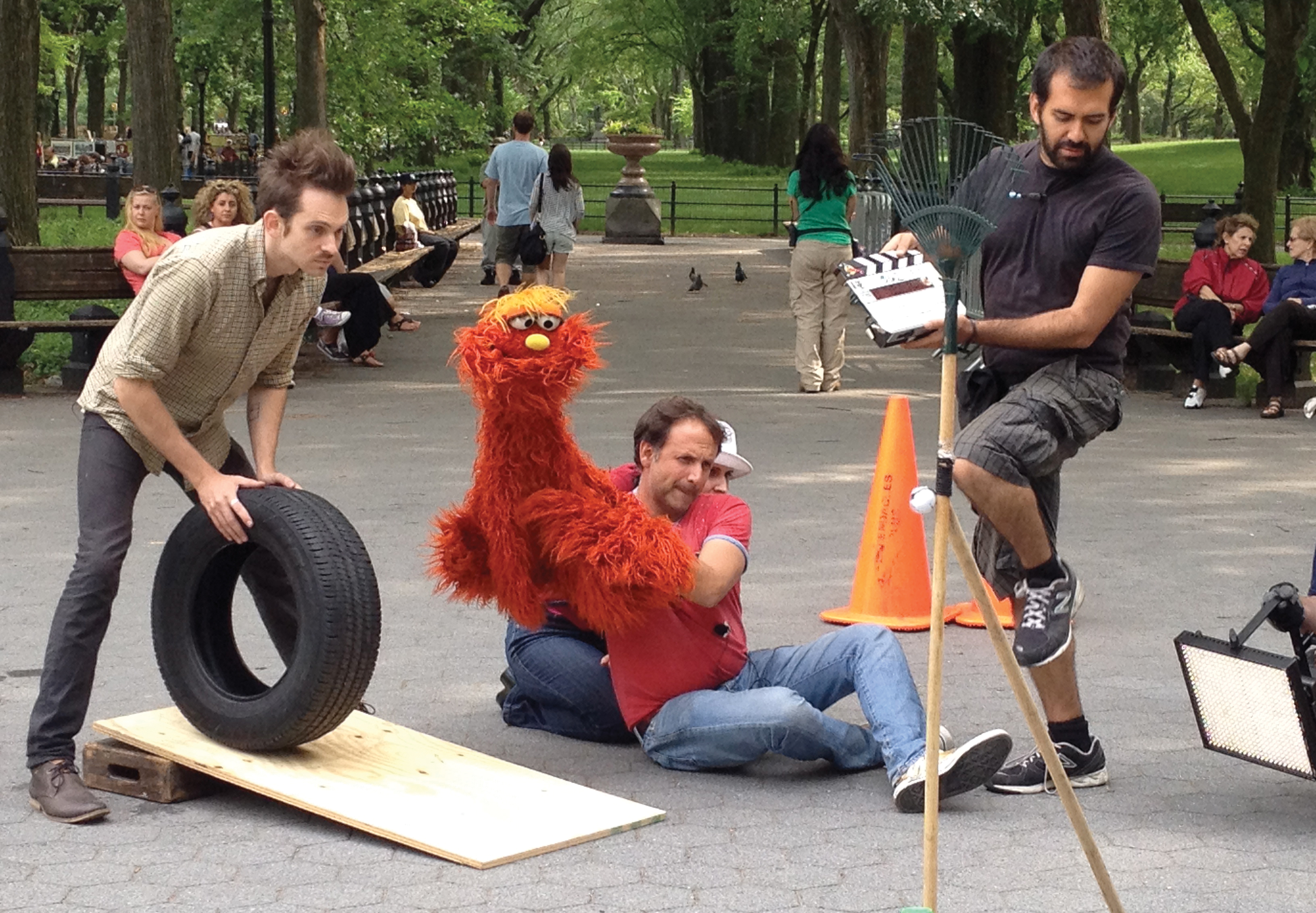Career of the Month
Kinetic Artist Joseph Herscher
Kinetic artists create artwork that moves, and require a keen understanding of physical forces. Joseph Herscher is a self-employed kinetic artist based in New York City. He makes elaborate machines out of everyday objects for a popular, advertising-revenue-generating YouTube channel (Joseph’s Machines), and also creates machines for various corporate and nonprofit clients.
Work Overview
I mostly make machines for my YouTube channel, but I also sometimes make and film machines for companies that want to promote products. My videos often go viral, so they get good publicity. I occasionally work for events—for example, I created a wine-pouring machine for a winery. I’ve run workshops at museums and created installations at art festivals. I’ve also given presentations, appeared on television shows, illustrated children’s books, and lectured at a design college.
I try to create videos that are funny and whimsical, and incorporate kinetic movement in unexpected ways. I usually come up with the ending first and work backwards, figuring out how to achieve it. I occasionally use geometry calculations, but physics formulas aren’t useful, because the real world is too chaotic, especially at small scales. There’s so much variation in humidity levels and other unpredictable factors. I do use general physics principles, though, and then I rely on trial and error and instinct.
I have an implicit knowledge of the physical world and can predict how something will move, because I’ve spent so much time observing. I create a setup and then observe it closely. I want it to work nine out of 10 times before I feel comfortable filming it. If I’m doing something live, I want to it have worked 50 out of 50 times. I often use the scientific method—when something isn’t working, I figure out why, then tweak it and try again.
Because of the COVID-19 pandemic, dollar stores are closed and I have to order things online, which takes much longer and has made my work more difficult. However, the nature of my work is to find creative uses for everyday objects, so it’s forced me to be more resourceful. I’m also getting more corporate work. It’s hard for advertisers to use production companies, but independent creators like me can do everything in their homes.
I set my own daily schedule. I spend an hour each day doing email and other administrative tasks. The rest of the time I spend building things. It requires a bit of foraging to find things that have specific dimensions. The machines take about two months to create, and a day to film.
My favorite part of the work is when people see the outcome for the first time and are tickled by it. My least favorite part is all the repetitive filming, which is very stressful—it takes 50 to 100 takes to get one perfect run.
Career Path
Growing up in New Zealand, I made machines to keep busy. I liked to solve problems and improve things, like making a machine that would allow me to turn off the light from my bed, or to reach something high up in a tree. I also liked making my parents laugh.
In college, I started a design degree, but then graduated with a computer science degree in logic and computation instead. I worked as a computer programmer developing front-end software interfaces for five years. During this time, I moved to New York, where the job prospects were better. I also worked on creative projects in my spare time. After I joined YouTube, I worked on one machine for four hours every day. After I published the final video, it went viral, and I started to get job offers. I decided to quit my job and became a full-time kinetic artist 10 years ago.
Knowledge, Skills and Training Needed
Learning woodworking and basic physics concepts was useful. Being able to build things can lead to so much innovation. Even if you end up working as a designer rather than a builder, it’s useful to understand how things are made in order to design them better. My high-school design classes helped me develop my creative approach too—generating ideas, picking the ideas to pursue, and then developing and iterating on them. But overall, this is something you learn by doing.
Studying performance, and specifically pantomime, is helpful. So is deconstructing old silent films. You learn how to use non-verbal communications, and how to use your eyes and exaggerated actions to tell a story. I picked up basic filming and video-editing skills from YouTube videos as I went along.
Advice for Students
Play around with interesting household objects and see what you can get them to do. See what’s interesting to you and makes you smile. Don’t get fixated on the end goals; just see what you can discover. Use that knowledge to make connections between things.
Watch online videos and copy the things you like. I also have an introductory tutorial on my channel. Think of everything from the point of view of the audience. You could make the coolest machine, but if people don’t get it, or if it’s not filmable, what’s the point? You have to think of where the audience’s attention is at any given moment, and how to lead them through a sequence in a non-stressful way. Doing things that are easy for others to follow is useful in any discipline.
The Rube Goldberg Machine Contest, organized by www.rubegoldberg.com, is also a great way to get involved in this kind of activity.

Filming one of Joseph’s machines on Sesame Street. Photo: Olivia Lynch. © 2012 Joseph Herscher.
Bonus points
Herscher’s Education: B.S. in computer science from Victoria University in Wellington, New Zealand, with an extra honors year in logic and computation.
Websites: https://www.youtube.com/channel/UCbNvfx3rYYxEopnRGxfu53Q, https://www.rubegoldberg.com/
Related Careers: industrial or product designer; storyteller; scriptwriter; video producer.



